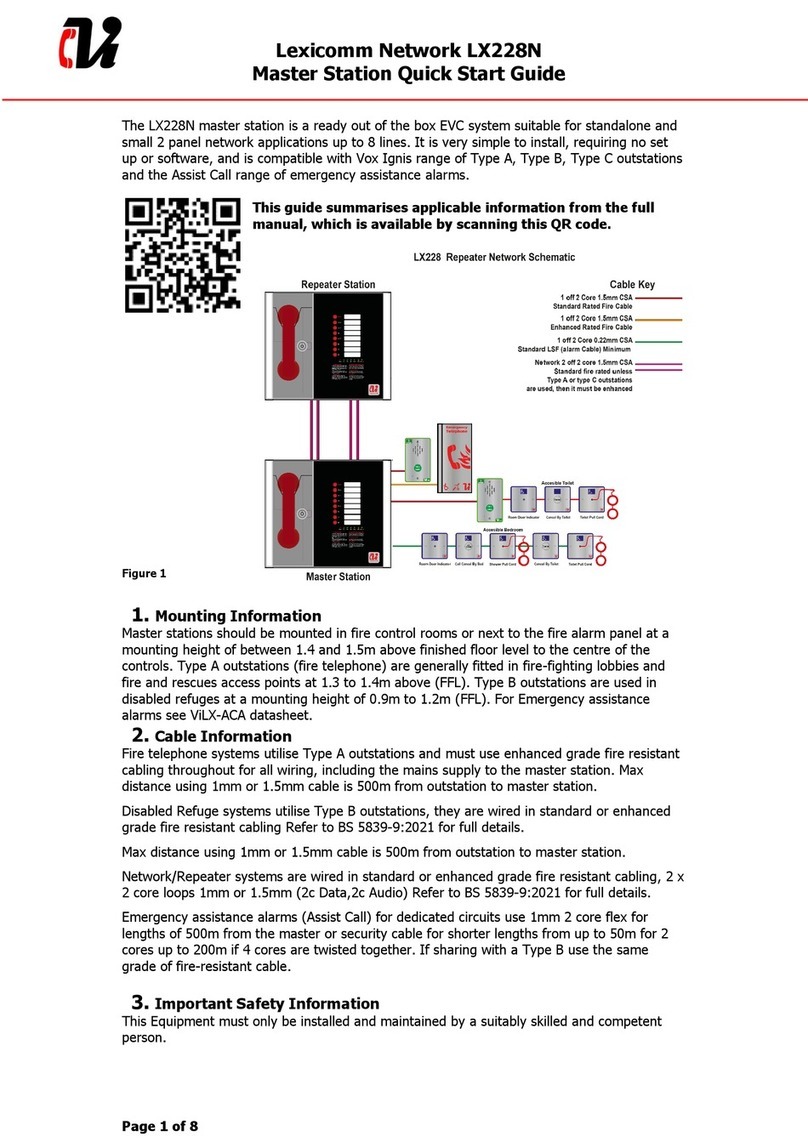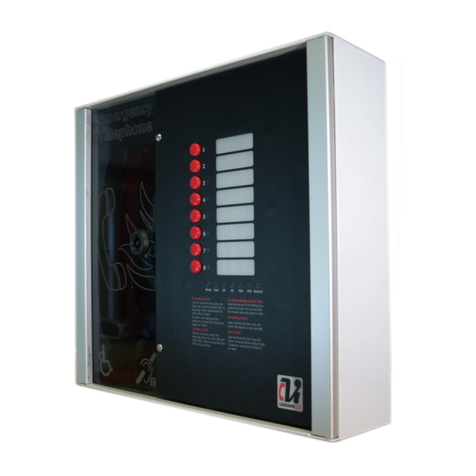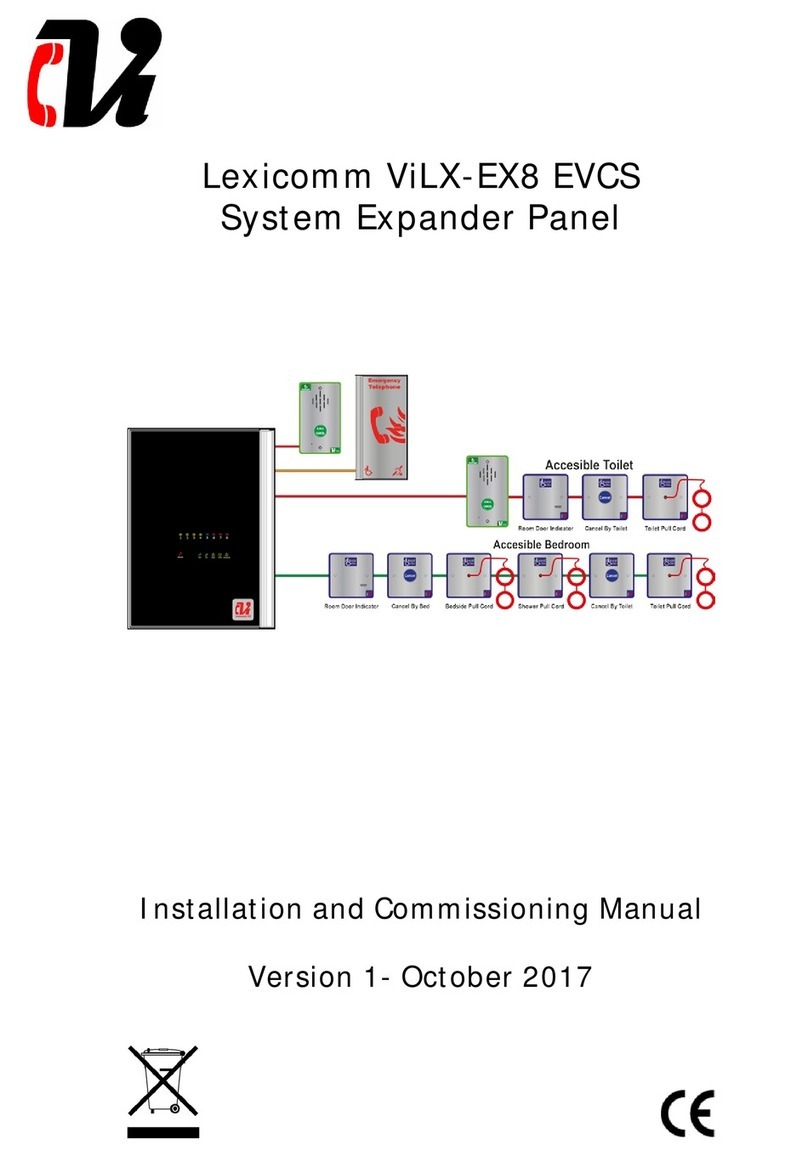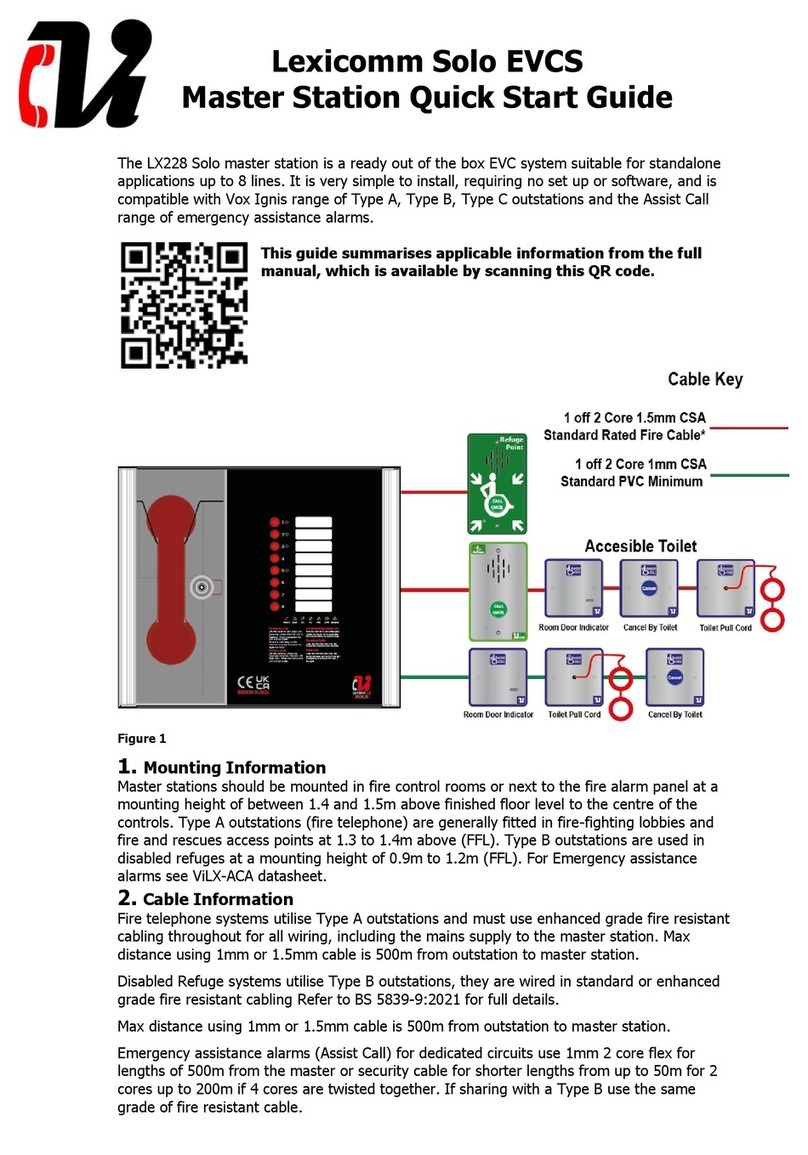5.3 Network Address
The TMS3 master station factory default network address is 1, network address 2 is the
default address for a system expander panel. When additional panels are added to the
network, the next address will be address 3. It is not essential that network addresses run
sequentially, and a gap can be left in the address sequence, however this is less desirable
and makes fault finding more difficult.
This address is set by the dipswitches on the Exchange PCB as shown in Figure 4. The
address is a binary number given by the positions of dip switches 1 to 6, with valid addresses
lying between 1 and 64 inclusive. A full address list is available in the full manual.
Figure 5
6. Commissioning
The commissioning should be carried out by a competent person who has a basic knowledge
and understanding of the design and installation sections of BS 5839-9:2021 and has access
to the specification of the project.
6.1 Cable Checks
The 500V insulation tests should have been carried out by the installer and the results made
available to the commissioning engineer.
All cables should be correctly labelled.
Test field wiring and check for end-of-line 10kΩresistor on all line circuits. Check cables are
clear from any short or open circuits.
Connect outstation cables into Line Cards ensuring the Earth is sleeved and terminated into
the Earth block.
6.2 Network Set up
Configure relevant dipswitches for the network settings that may be required as per the set-
up section in this manual.
Connect the network cabling (if appropriate), ensuring Net OUT ABCD is correctly connected
to Net IN ABCD and the ring is continuous. Only Connect the Earth screen of the Net IN
cables.





























